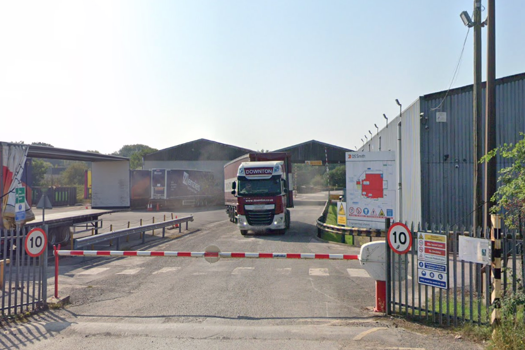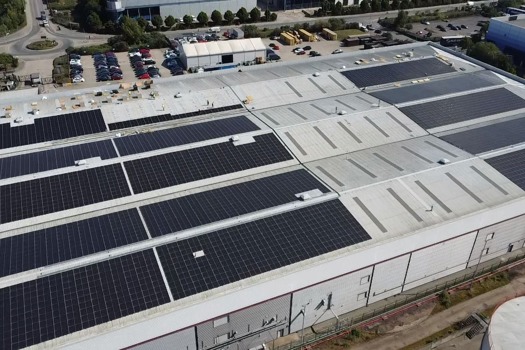In 2005, after the £15m-turnover general commercial outfit suffered a 7% rise in raw material costs, Stones installed an offline Apollo sheeter – a solution that would not stretch its finances too far and allowed for further investment and growth.
Running four Heidelberg 10-colour presses, all aged between 10 months and 10 years, Stones processes around 6,000 tonnes of paper each year. At this level of usage, paper price rises were biting hard and making it essential to reduce paper wastage.
An offline model was the only option for the firm; fitting one sheeter to the infeed of every press would have been prohibitively expensive.
“We looked at inline machines, but the fact that the Apollo offered a one-off investment swung it for us,” explains managing director Paul Prue. The stand-alone Apollo sheeter, which cost the firm around £180,000, has the capacity to feed multiple presses. In total, Stones spent about £300,000 on the project, which also included a waste extraction system and reel handling kit.
The firm also had to consider that an inline unit could only produce single cut sheets, whereas the Apollo could handle four sheets simultaneously as two reels are sheeted together, being slit and converted in one pass. “It is just like having four inline machines anyway,” remarks Prue.
Staffing
However, an offline sheeter must be manned and Stones has had to take on three more staff as operators. But, since the firm already employs 130 staff, this has not had a significant impact on ROI.
In fact, the knock-on investments seem small, compared to the savings Stones has since made. David Holland, managing director of Stones’ parent firm The Goodhead Group, explains how the sheeter has improved the printer’s margins, allowing it to take a competitive stance in the short-run mini-web market. “Before, we might have tried to compete with the web market, but profit was nonexistent,” he admits. “Paper costs were consistently rising. We also had to deal with the lower-end web firms offering customers better prices than we could achieve.”
Holland knew that if Stones could achieve the same paper cost-savings it could increase its presence in the mini-web sector.
The sheeter has helped the firm gain tonnage rate savings of around 10%. This amounts to “a substantial saving” when considering the amount of paper the firm purchases each year, says Prue, although he will not discuss actual figures. Stones also recognises the potential acreage and waste savings that the machine can provide: “You can cut sheet lengths down to fit a job perfectly,” explains Prue, “and coupled with clever imposition, that makes good use of paper width, so you get the most out of a reel.”
However, although the firm is confident in the Apollo’s ability, it still stocks cut sheets; its ratio of reels to sheets is around 70% in favour of reels. “We do still need to buy sheets because there are certain grades you just can’t get in reels,” says Paul Hampson, Stones’ commercial executive, who adds that the move to reels hasn’t affected warehousing space much: “We’re still using the same holding area.”
Reel requirements
Reels of widths between 1,290-1,450mm are held in stock to produce standard SRA1 and B1 sheet sizes – which effectively means that reels are used for most jobs, including weights of 80-200gsm in gloss and silk grades. What Stones doesn’t stock in reels is special papers – mainly due to increased lead times.
“Sometimes you have to wait between four and five weeks for bespoke reels to be prepared at the mill when you might only have four or five days to do the whole job,” says Hampson. As increasing numbers of commercial printers install sheeters, however, some mills are beginning to change their special-makings policies in order to deliver more non-standard grades at shorter notice.
Stones has also spent time assessing the productivity of the sheeter, to ensure it is maximising output, by recording the amount of sheets it produces per shift. Once the number of sheets is known for each shift, production staff find a weekly average and determine the speed at which the sheeter has been running. However, averages do depend on paper grade and how many reel changes are made each shift.
Cutting sheets to size in-house does generate an increased lead-time, but Stones has avoided any delays through careful planning. Around 60% of paper is cut prior to the job being run, and a varying proportion of this is stored, rather than being loaded straight onto the press. This ensures that Stones is always prepared to take on last-minute jobs.
Extra capacity
The sheeter is currently operating at around 70% capacity, working at rates of between 150-200m per minute. Originally the firm was running the sheeter on a double-day schedule but recently increased this to include a third night shift. “It has a maximum speed of 300m per minute but that’s like saying a car can hit speeds of 180mph,” jokes Hampson, “its production speed is more like half to two-thirds of that.” But even feeding four presses, the sheeter is not particularly stretched. “We could easily bring in a new press and continue running it,” Hampson says.
And this is exactly what the firm is planning to do. As part of its expansion plan, Stones will soon install a fifth 10-colour B1 Heidelberg or MAN Roland press. “The best thing about the Apollo is that at current usage levels, we don’t have to consider any further investment,” says Prue. In fact, the firm is confident that it could install a couple more presses and still rely on the sheeter to feed all its presses with ease.
As well as investing in an additional press, Stones plans to replace its existing platesetter and install a stitching line. It also intends to enhance its customer service and pre-media departments with a system that lets clients submit, view and approve PDFs online.
New markets
As a result of its growth, the firm hopes to attract more customers and expand into new markets such as catalogue printing. And it now believes that it can provide a unique service to clients that will help it achieve this. With a bank of 10-colour presses, a fifth on the way, and just one sheeter feeding them all, Prue argues that the firm can provide enormous output flexibility. “If a press goes down we can still chop and print sheets and deliver jobs on time,” he explains. “This gives us a powerful offering that many other firms just haven’t got.”
Holland agrees that having an operation that can run all of the time is another reason for choosing an offline sheeter. “If a press is making ready or broken down, you can’t use an inline sheeter,” he points out.
“Buying a sheeter was a no-brainer for Stones. The investment was not high, the return on investment was persuasive, and it gives us excellent flexibility in the market,” says Prue. The sheeter has provided a simple and straightforward answer to the ever-growing problem of rising paper costs. And more importantly, it has given Stones the competitive edge it needs without interfering with crucial future growth and expansion projects.
INSPECTION LESSONS
Buying a sheeter
1 Consider the number of presses that you own and whether you are planning to install more in the future. This will help you assess whether an inline or offline model is more suited to your business
2 An offline machine will have to be manned and so it is important that a firm already has, or can afford to take on, extra staff
3 Although reels are relatively easy to stack, firms must ensure they have adequate storage space
4 Evaluate what stocks are used most often. If special papers make up the majority of the work then reels may be difficult to buy in
5 Calculate the extra order and production lead times that are attached to buying and cutting the reels. Careful schedule planning may be required









